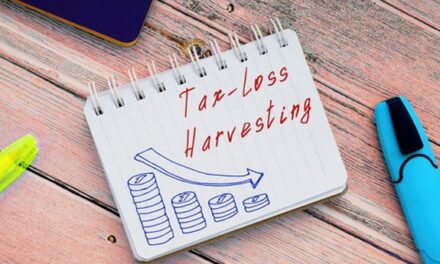For us financial newsletter writers, one wrong prediction follows you for the remainder of your career.
If you get a prediction right, you can trade on that for the rest of your days.
A few weeks back I predicted a turbulent market heading into the end of the year. There were too many unknowns.
Well, I sure got that one right.
Consider the headwinds investors have faced in recent trading sessions:
- Growth stocks have collapsed as the impact of earlier-than-expected Federal Reserve interest rate hikes sank in. The Russell 2000 small-cap index has fallen by nearly 10% in the last two weeks.
- The Omicron variant of COVID took swift revenge on hasty travel bans. It’s spreading like wildfire in Europe and North America.
- Senator Joe Manchin (D-WV) destroyed the Democrat’s hopes of passing its Build Back Better legislation on Friday (and probably its hopes of remaining in power). Analysts immediately reduced GDP growth estimates, clobbering cyclical stocks. Renewable energy and electric vehicle stocks dropped nearly 10% yesterday.
It’s the worst possible version of my year-end prediction.
But you can still make a silk purse out of this sow’s ear….
Adding Insult to Injury
In 1983, Texas Blues boogie band ZZ Top released the album, “Eliminator.” It became their top seller.
But two-thirds of ZZ Top didn’t participate. Bassist Dusty Hill and drummer Frank Beard barely appear on the album.
That’s the story of the 2021 stock market … although you’d be forgiven for missing that, given index-level records we’ve reached.
The sobering truth is that almost all index-level gains this year have come from a handful of mega-cap stocks.irs
The chart below shows the gap between major stock indexes (in pink) and the average stock in those indexes (red) and their 52-week highs:

(Click here to view larger image.)
The average stock in every single index is in correction this year (off 10% from previous highs). The Nasdaq and the S&P Small Cap 600 are in bear market territory (off 20%).
In other words, recent bad news comes on top of an already brutal year for most stocks.
Make the Best of a Bad Situation … but Hurry
Chances are, you’ve probably experienced steep losses on some of your positions this year.
But if you’re holding those stocks in a taxable brokerage account, you can minimize them with some last-minute trades before the bell rings on the last trading day of the year.
Tax-loss harvesting involves selling stocks for a capital loss and using them to offset capital gains on your taxable gains this year. Your capital gains tax will be calculated on your net gains only.
So, let’s say you made $5,000 in capital gains in 2021.
In the unfortunate event that capital losses exceed your gains, you can use up to $3,000 of what’s left over to offset your non-investment income.
If there’s still more capital loss, you can use it to offset capital losses and/or income for the next three years.
Which Ones to Sell?
There’s no hard and fast rule as to which stocks you should dump to harvest capital losses. But there are general guidelines.
First step is to sell stocks that are unlikely to recover.
There are plenty of losers from the SPAC mania late last year and early this year — overhyped, underperforming startup companies whose stocks will never recover. Some may end up delisting or being bought out for a pittance. They should be first on your chopping block.
Second, sell any positions where you have lost faith in the company’s bull thesis. Even if those losses are relatively small, if you don’t believe in the company’s long-term prospects, you shouldn’t own it.
The third candidates are stocks that have suffered steep losses, but which have good prospects, and may eventually rebound.
That may seem like an odd recommendation, given that best practice is to ride through losses on promising companies and hold on for long-term gains.
But there’s nothing to stop you from selling a stock you want to keep and harvesting the losses now … only to buy it again next year.
Beware the Wash Sale
For example, let’s say ticker XYZ is down over 50% from when you acquired it back in February. But it’s a solid company in a sector with strong tailwinds, like renewable energy, and you’re confident it can turn itself around.
Selling your position now allows you to offset those losses against gains you’ve made on other stocks, to minimize your tax obligation.
But there’s nothing stopping you from re-entering the position later when it begins to rise again.
Well, there is one thing … but you can easily avoid it.
The Internal Revenue Service (IRS) has a rule against “wash sales.” That’s when you sell a security at a loss, and then buy the same stock within 30 days before or after that sale.
Let’s say you sold XYZ two weeks ago for a 50% loss, intending to offset that against other gains. If you buy the stock again at a lower price next week, the IRS won’t allow that first capital loss.
To make matters worse, they will add that loss to the cost of your new position, which will reduce its cost basis and increase your potential taxable gain!
And the IRS is clever. The wash sale rule applies to your spouse, another family member or a company that you own or control.
In a nutshell, if you plan to sell a stock for tax-loss harvesting, do not buy the same stock 30 days before that sale, or 30 days after.
After those 30 days, you are free to reacquire it, your capital loss secure.
It’s been a tough year in the stock market. But you still have time to make the best of a bad situation!
Kind regards,

Ted Bauman
Editor, The Bauman Letter








